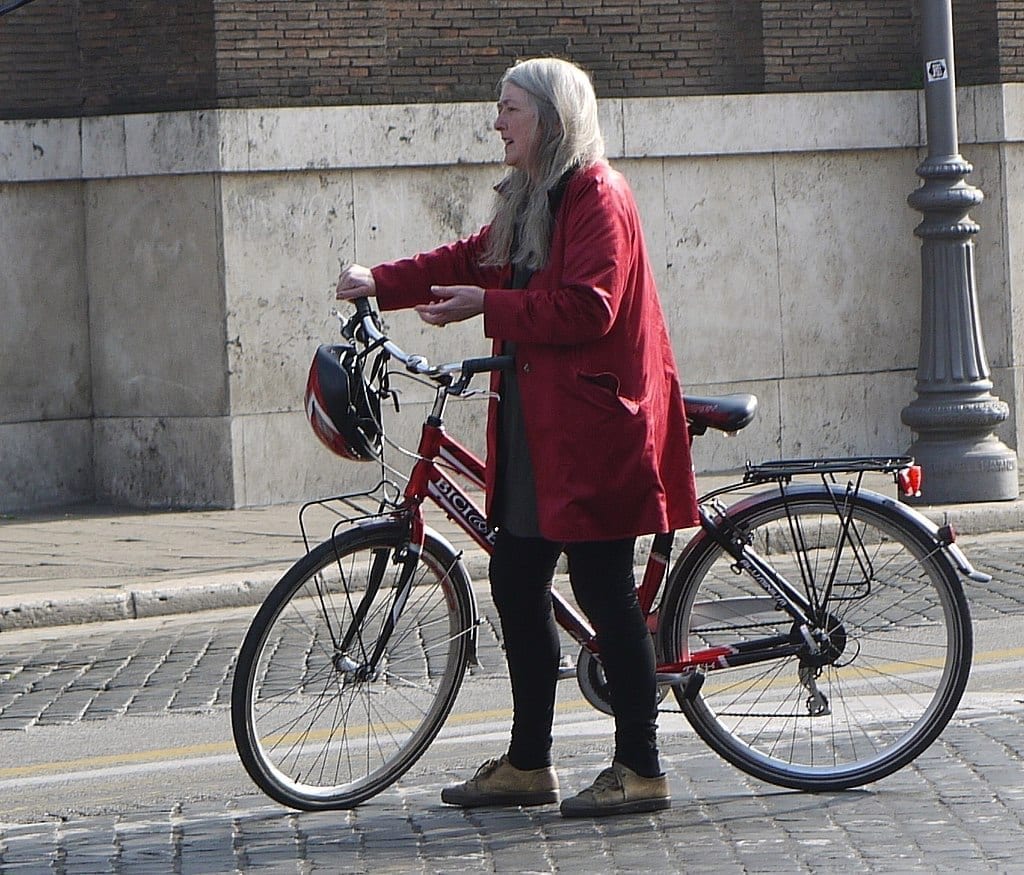by Molly Day-Coombes
Level 3 History student
Mary Beard’s Women & Power is the adaptation of two lectures she delivered as part of the London Review of Books lecture series and is divided into two corresponding sections: The Public Voice of Women; and Women in Power. The book reveals how the mechanisms that silence women and sever them from the centres of power are deeply embedded in Western culture. Being a Classicist, Beard uses examples from ancient Greece and Rome to reveal the long history that Western culture has in silencing women and compares these to modern forms. Beard’s aim is to take the ‘long view on the culturally awkward relationship between the voice of women and the public sphere of speech making, debate and comment’. She eloquently fulfils this claim by illustrating the various links between ancient and contemporary culture. Throughout the book, Beard goes further than a ‘simple diagnosis’ of misogyny, recognising the long back story of women being silenced and exploring the reasons for this. Beard’s inspiring book encourages us to reassess how we think of women and power and prompts us to consider why we think in this way today.

The first section, The Public Voice of Women, analyses examples of women using, or being prevented from using, their voices in the Classical world and makes connections to contemporary society. A common theme within these examples is the presentation of women who speak in public as androgynous. Beard cites various examples: Maesia from the first century AD, the ‘“androgyne”’ with ‘a man’s nature behind the appearance of a woman’; and Elizabeth I in her well-known address to the troops at Tilbury, ‘body of a…woman, heart and stomach of a king’. Beard links this section back to a more familiar history by discussing the tactics Margaret Thatcher, the first female prime minister, used to enhance her authority within her speechmaking through lowering her pitch.


Beard shows how the image of Medusa is regularly used in conjunction with female political leaders, for example, Angela Merkel’s features being superimposed on Caravaggio’s image, and Theresa May being called ‘Medusa of Maidenhead’. Most disturbingly, Trump supporters produced an adaptation of Cellini’s statue which depicts Perseus holding the decapitated head of Medusa, with Hillary Clinton’s face over Medusa’s and Trump’s over Perseus’. The vulgar image became part of the everyday American decorative world as it was made into various memorabilia, thereby normalising gendered violence. As someone who had never before considered the cultural implications of comparing women in power to figures like Medusa, I found this part of the book extremely eye-opening and it encouraged me to further contemplate the harm that cultural artefacts can cause.
Notable for contemporary readership, Beard explores the way in which language is used to describe women’s speech and asks ‘Do words matter?’ The answer is simple: yes. Beard shows how the words frequently used to describe the sounds of women’s speech are ‘whinging’ and ‘whining’ which ‘removes the authority’ of women’s speech, repositions them back to the domestic sphere, and ‘re-privatises’ their words. An investigation of language is a significant but underplayed part of the book as Beard encourages the reader to question the use of certain terms which have connotations of gender, thus revealing the inequalities in coverage of women in the public sphere. Beard also closes the book with many questions to consider; she asks what it would take to reinstate women on the inside of power, and whether the structure of power needs to be changed in order to allow women to fit inside it.
Women & Power encourages a reassessment of how we think about women in power and a call to become more aware of the language we use to describe these women. Beard encourages her readership to not become complacent and accept cultural norms. The Greek and Roman examples are recognisable and easily accessible to non-Roman historians. Beard persuades us to use our voices in the public sphere which links her ideas seamlessly to the #MeToo and #TimesUp campaigns which are prominent in the media today. Beard’s book is a poignant reminder that despite 2018 marking the centenary of women’s suffrage, there is still a long road to travel in order to reach full equality between the treatment of men and women in relation to power.